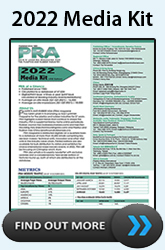Machinery: Processing rPET in thinwall injection moulding
In cooperation with partners Alpla Group, Brink and IPB Printing, Austrian machinery maker Engel is presenting what it says is a quantum leap for the packaging industry at K2022 show in October.
For the first time, thin - walled containers made of PET can be produced in a single injection moulding process step . Engel is process ingrecycled PET (rPET) at its stand. An Engel e-speed injection moulding machine with a newly-developed injection unit is being used to do this.
Featuring a wall thickness of 0.3 2, the transparent, round 125-ml containers are representative of a whole genus of packaging, especially in the food industry . Thanks to integrated in - mould labelling (IML, the containers are ready-for-filling as soon as they leave the production cell. The special feature in this application is the material.

The thin-walled containers are produced directly from rPET in a single step. Up to now it has only been possible to process PET in thick-walled parts such as bottle preforms in injection moulding. The final packaging format was created in a second step of the process – by blow moulding for example.
Bottle-to-cup and cup-to-bottle as the target
Under the European Plastics Pact, the intent is for all plastic packaging to contain 30% recycled material and to be 100% recyclin g capable by 2025. The typical materials for packing foods in thin-walled containers are polyolefins or polystyrene. However, experts estimate that it will be impossible to achieve the stated objectives with these materials. And the recycling flows lack the approval of the European food authority, EFSA. rPET offers a solution for avoiding penalties and special taxes here. Although the price for PET is high right now, this makes the material a cost effective alternative. EFSA has approved numerous recycling processes for PET, ensuring that the material is available in Europe
PET offers the benefit of a close recycling loop already being in place. To date, PET is the only packaging material which can be processed as a recycled material on an industrial scale to create food packaging. This innovation sees partner companies pave the way for removing the need to downcycle packaging products other than bottles, and opens up an opportunity for recycling or even upcycling. This would substantially extend the range of uses for PET and rPET. In addition to the bottle-to-bottle cycle, this also means that the establishment of bottle-to-cup or even a cup-to-bottle recycling is conceivable.
Injecting at a higher speed/second

The modified rPET being processed at the K show comes from drinks bottles recycled in the plants of packaging and recycling specialist Alpla Group, headquartered in Hard, Austria. Other partner companies involved in the show exhibit are Brink (Harskamp, Netherlands) for the mould and IML automation and IPB Printing (Reusel, Netherlands) for the labels.
An Engel e-speed 280/50 injection moulding machine is the heart of the production cell. Engel adds it specifically developed this hybrid machine with its electrical clamping unit and hydraulic injection unit for the high performance requirements of thin-wall injection moulding.
At K2022, it will show a new high-performance injection unit that achieves injection speeds up 1,400 mm per second at a maximum injection pressure of up to 2600 bar when processing small shot weights with an extreme wall-thickness to flow path ratio.
To process rPET, Engel says it combines the new injection unit with a plasticising unit from in-house development and production specifically designed for processing recycled material. During plasticising and injection, the viscosity of the PET is configured for thin-wall injection moulding. The new e-speed supports the processing of arbitrary recycled materials up to 100% rPET
Taking different label trends into account
Engel adds that it is presenting a mould at the K show which can process different labels at the same time. This sees the partners respond to the globally different trends in IML that are in line with the EPBP and/or Recyclass recommendations in the EU, and with the specifications from the Association of Plastic Recyclers (APR) for the US.
The dyes used on in-mould labels for the American market and its requirements can be washed off as the intent is to recycle the labels and the application for this market. A different technology is used in Europe: an in-mould label which floats off in the recycling process making it easy to separate the dyes and the label from the PET.
(IMA)Subscribe to Get the Latest Updates from IMA Please click here
©2022 Injection Moulding Asia. All rights reserved.

















